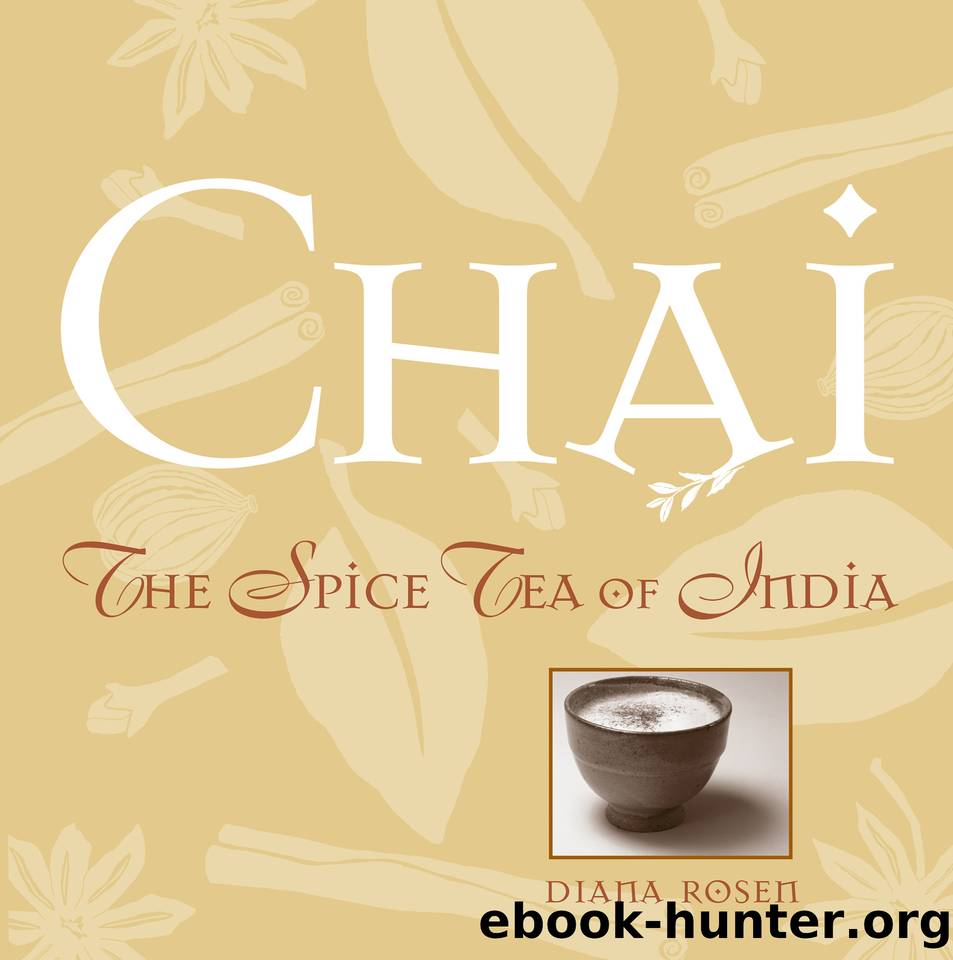Chai by Rosen Diana

Author:Rosen, Diana
Language: eng
Format: epub
Publisher: Storey Publishing, LLC
Published: 2015-11-25T00:00:00+00:00
Processing Assam Tea
The long, flat fields of the Assam farms we visited were fragrant with the sweet malty smell of fresh tea leaves. The heat and dampness of the fields provided a surprisingly sensual experience; the fragrance was intoxicating in the gardens, and in the facility where the withering (drying) and processing are performed. It was tea heaven.
It was quite fascinating to watch the crush, tear, curl (CTC) pellet machine where the bright green fresh leaves traveled the long, long conveyer in its slow travel for at least an hour. Oxidizing along the way, the green leaves turned brown naturally along this 100-foot path, as a cut apple would when exposed to the air. Then the lightly withered leaves were placed into a special oven to oxidize a full 100 percent. (Green tea is not oxidized at all, and oolongs are oxidized 2 to 80 percent, depending on their various styles; all blacks are oxidized 100 percent.)
In the processing of Assam tea, leaves are often intentionally cut up because they are so large. They sometimes require the additional step of filtering with a cylinder sieve. If the leaves are not small enough to sift through, they are run through a machine again to break them into smaller pieces.
Unlike Darjeeling tea leaves, Assams are generally processed by the CTC method to accommodate the enormous demand from India itself. Indiaâs taste is for CTC tea, which is cheaper, is plentiful, and lasts longer.
The market for loose, full-leaf teas is always risky. These teas have a shorter life span and so must be sold more quickly and drunk sooner than the long-lived CTC tea. And as in any agricultural business, the need for freshness makes all produce vulnerable, even a dried leaf like tea. Still, you can pay almost as much for a high-quality, uncut, loose-leaf Assam as the finest Darjeeling. The quality, I am happy to report, is improving continually, and the potential for even better teas in the future is enormous. So the inspiration to create fine Assams remains.
Download
This site does not store any files on its server. We only index and link to content provided by other sites. Please contact the content providers to delete copyright contents if any and email us, we'll remove relevant links or contents immediately.
Make It Japanese by Rie McClenny(670)
Feasts of Good Fortune by Hsiao-Ching Chou & Meilee Chou Riddle(619)
6 Spices, 60 Dishes by Ruta Kahate(602)
Banchan by Caroline Choe(601)
Chinese Homestyle by Zhu Maggie;(579)
Ever-Green Vietnamese by Andrea Nguyen(564)
Amrikan by Khushbu Shah(546)
Modern South Asian Kitchen by Gidda Sabrina;(545)
Vietnamese Vegetarian: Simple Vegetarian Recipes from a Vietnamese Home Kitchen by Uyen Luu(530)
Made in Taiwan by Clarissa Wei(528)
Noodles, Rice, and Everything Spice by Christina de Witte & Mallika Kauppinen(528)
Easy Hawaiian Cookbook: 70 Simple Recipes for a Taste of the Islands by Aiona Chef Philip "Ippy(519)
We Cook Filipino by Jacqueline Chio-Lauri(509)
Atsuko's Japanese Kitchen by Home-Cooked Comfort Food Made Simple By Atsuko Ikeda(506)
Complete Chinese cookbook - PDFDrive.com by Ken Hom(501)
Sweet and Easy Japanese Desserts by Laure Kié(498)
Complete Wok Cookbook: 125 Classic Chinese Recipes to Steam, Braise, Smoke, and Stir-fry by Toy Chris(492)
Tandoori Home Cooking: Over 70 Classic Indian Tandoori Recipes to Cook at Home by Maunika Gowardhan(487)
Madame Vo by Jimmy Ly & Yen Vo & Dan Q. Dao(487)
